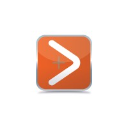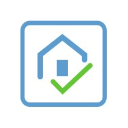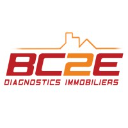Real Estate Diagnosis software: purchase guide
Real estate diagnosis software helps professionals in the property sector conduct, document, and report on building inspections. These tools are essential for home inspectors, real estate agents, surveyors, and engineers who assess the condition of buildings for compliance, safety, maintenance, or sale. From residential apartments to commercial buildings, diagnosis software supports every phase of the inspection — from checklist creation to PDF reporting and client communication.
What is real estate diagnosis software?
Real estate diagnosis software is a digital tool designed to facilitate the technical assessment of buildings and properties. It enables inspectors to record defects, compliance issues, measurements, and safety risks directly on-site — often using a tablet or smartphone. These applications replace traditional paper-based workflows and provide more accurate, standardized, and accessible data.
Depending on the legal requirements of a region or country, such tools may be used for mandatory diagnostics (e.g. lead, asbestos, termites, electrical compliance), pre-sale technical audits, rental entry/exit inspections, energy efficiency ratings, or structural evaluations.
The software typically includes modules for:
Inspection checklists tailored to regulatory requirements or building type
Photo annotations to document issues with precision
Automated report generation in PDF or editable formats
Client and property database management
Sync across devices and offline functionality
The aim is to streamline the workflow for field professionals and reduce human error in complex, legally sensitive reports.
How does real estate diagnosis software work?
The software is used during on-site inspections, usually on a mobile device. The inspector selects a property and inspection type, then follows a guided process to evaluate each room or system — recording notes, photos, checkmarks, and severity levels.
Each piece of data is stored with time, location, and often a geotag or digital signature. Once the inspection is complete, the software automatically compiles all inputs into a professional report. Many tools allow customization of layouts, branding, and terminology according to national or company-specific standards.
Depending on the solution, the following features are often included:
Preloaded templates for standard diagnostics (electrical, gas, energy, etc.)
Real-time syncing with cloud storage
Digital signatures for inspectors and clients
Built-in compliance reference (e.g. building codes or inspection standards)
Client portals for accessing completed reports
Integrations with CRM or real estate transaction platforms are increasingly common, especially for high-volume agencies or multidisciplinary teams.
Why is real estate diagnosis software important?
Property inspection and diagnostic reporting are subject to legal scrutiny in most jurisdictions. Errors or omissions can lead to liability, fines, or delays in transactions. Manual methods — clipboards, cameras, and separate word processors — are slow, inconsistent, and difficult to audit.
Diagnosis software brings value in several key areas:
Standardizes reporting across teams and regions
Reduces time spent per inspection, increasing efficiency
Improves documentation quality, including annotated images and structured findings
Ensures legal and technical compliance, reducing the risk of disputes
Facilitates collaboration between inspectors, agents, and property owners
For companies working at scale, the software becomes a backbone of operational quality, risk mitigation, and customer transparency.
Comparison of real estate diagnosis software
| Software |
Focus Area |
Key Features |
Platform Support |
Pricing (2025) |
Best for |
| Diagmenter |
Diagnostic compliance |
Checklist-based inspections, legal reference guides, report automation |
Web, Android, iOS |
Starting at €49/month |
Independent inspectors in EU markets |
| Spectora |
Home inspection & reports |
Dynamic templates, client portals, image annotations, calendar sync |
Web, Android, iOS |
From $99/month |
U.S.-based residential inspectors |
| EDLSoft |
Entry/Exit inspections |
Condition reports, inventory tools, offline use, batch report export |
Windows, Android |
License-based (from €650) |
Property managers and rental agencies |
Trends in real estate diagnosis software for 2025
As regulation and data expectations grow in the property sector, real estate diagnosis software is evolving rapidly. Key trends shaping 2025 include:
AI-assisted diagnostics: Automatic defect recognition in photos, predictive maintenance alerts
BIM integration: Linking inspection data to building models and plans for lifecycle management
Regulatory intelligence: Real-time updates on compliance standards and inspection rules
Remote inspections: Tools to support video-based or augmented-reality walkthroughs
ESG reporting features: Integration of energy performance and sustainability indicators into inspection outputs
These advances not only improve inspection accuracy but also support broader initiatives in smart property management, green construction, and digital real estate documentation.
Conclusion
Real estate diagnosis software is no longer a niche tool — it’s a core component of modern property assessment workflows. Whether you’re performing pre-sale technical audits, rental move-ins, or compliance checks, these platforms improve speed, consistency, and professionalism.
With the growing complexity of building codes and client expectations, reliable diagnostic tools will be increasingly essential to operate competitively and responsibly in the real estate sector.



